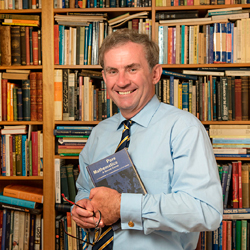HSC Physics Ideas to Implementation
/With the old Ideas to Implementation topic being examined for the last time this November a list of true-false questions on concepts that are often misunderstood is given below. This list will be updated during the year.
Cathode Rays
- A paddle wheel spins showing that cathode rays have momentum.
- A paddle wheel will spin if the pressure in the tube is zero.
- Cathode rays are not emitted when positive ions in a discharge tube impact on the cathode.
- Cathode rays cause glass to phosphoresce.
- Heinrich Hertz found that cathode rays could not travel through a metal foil.
- Heinrich Hertz observed that cathode rays were deflected by an electric field.
- When the pressure in a gas discharge tube is reduced the order of formation of structures in the tube is Faraday dark space, positive column, striated positive column, Crookes dark space, negative glow.
- Dark spaces in a discharge tube are caused by destructive interference.
- Cathode rays have their greatest speed in the bright areas.
Electric and Magnetic Fields
- In J J Thomson's original experiment he used perpendicular electric and magnetic fields to give equal magnitude forces on a cathode ray causing them to move in a straight line.
Blackbody Radiation Curve
- An example of a blackbody is a piece of iron painted black.
- In the blackbody spectrum there are not many photons released at low frequencies.
- In the blackbody spectrum there are many photons released at high frequencies.
Photoelectric Effect
- The frequency of light is the number of photons passing a point in one second.
- If the frequency of the light increases there are more photons passing a point in one second.
- If the frequency of the light increases the intensity of the light remains constant.
- The photoelectric current does not change if the intensity of the light is kept constant and the frequency is increased.
- Heinrich Hertz found that when ultraviolet light was directed on a spark gap a spark was not produced when the width of the gap was increased.
- Photoelectrons ejected by exposure to bright light have a greater maximum kinetic energy than those ejected by dimmer light of the same frequency.
Conduction in Metals
- The crystal lattice is composed of positively charged ions. Conduction electrons are attracted to the lattice ions and this causes resistance in a metal.
- Resistance in a copper wire is due to collisions between the conduction electrons and the stationary copper atoms in the wire.
Band Theory
- The valence band in an insulator is not full.
- Intrinsic silicon has no electrons in the conduction band at room temperature.
- Conduction in intrinsic silicon is due to electrons moving in the valence band.
Bragg Experiment
- The x-ray diffraction pattern produced by a crystal is a series of alternating bright and dark fringes.
Superconductors
- Magnetic fields cannot pass through all superconductors.
